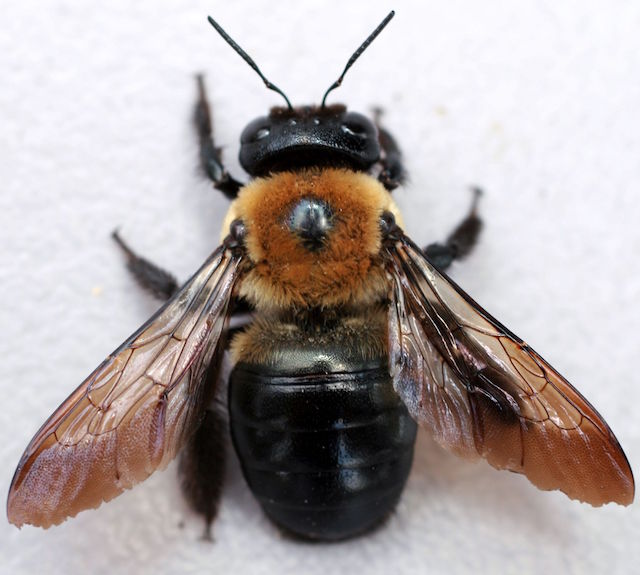
With its diverse ecosystems, Ohio hosts various bee species, among which carpenter bees hold a unique place. Recognized for their wood-boring habits, these bees are often misunderstood. This article aims to provide a comprehensive understanding of carpenter bees in Ohio, exploring their identification, behavior, ecological impact, and practical control methods.
Understanding Carpenter Bees
Carpenter bees belong to the genus Xylocopa, with the most common species in Ohio being Xylocopa virginica. Unlike their honeybee relatives, carpenter bees are solitary creatures. This section introduces their physical characteristics and life cycle to aid in their identification and understanding.
Identification and Physical Characteristics
Carpenter bees are large, robust insects, often mistaken for bumblebees. However, a distinctive feature is their shiny, hairless abdomen, contrasting with the hairy abdomen of bumblebees. They measure approximately one inch in length and exhibit sexual dimorphism; males have a white spot on their face, while females are uniformly dark.
Life Cycle and Behavior
Carpenter bees have an annual life cycle. Females lay eggs in wood tunnels they excavate, provisioning each chamber with pollen for the larvae to feed upon. These bees prefer weathered or unpainted wood for nesting, which can lead to structural damage over time. Their solitary nature means each female bee is responsible for her own nest, unlike communal or eusocial bees.
Ecological Impact & Benefits
While often viewed as pests due to their wood-boring habits, carpenter bees play significant roles in their ecosystems. This section discusses their pollination activities and the nuanced balance between their benefits and the challenges they present.
Pollination and Its Importance
Carpenter bees are important pollinators, especially for open-faced flowers. Their size allows them to pollinate flowers that are too large for other bees, contributing to the biodiversity and health of ecosystems. Moreover, their activity supports the reproduction of many wild and cultivated plants.
Assessing the Damage vs. Benefits
While carpenter bees contribute to pollination, their nesting habits can cause damage to wooden structures. It’s essential to balance their ecological benefits against the potential harm they might cause. Preventive measures and non-lethal control methods can mitigate damage without significantly impacting bee populations.
Managing Carpenter Bees in Ohio
Managing carpenter bees involves a combination of preventive measures and control strategies. This section outlines practical steps to protect wooden structures from damage while minimizing harm to the bees.
Preventive Measures
The best strategy against carpenter bee damage is prevention. Painting or varnishing wood surfaces makes them less attractive to bees. Additionally, sealing cracks and crevices in wood structures can deter nesting activities. Regular maintenance and inspection of wooden structures are crucial to early detection and prevention.
Control Methods
When preventive measures fail, control methods can be employed. Physical removal of nests, using barriers to block re-entry, and applying natural repellents are preferred methods. Chemical treatments should be a last resort to get rid of carpenter bees as they may potentially harm non-target species.
The Balance Between Coexistence and Control
Carpenter bees in Ohio present a unique challenge that requires a balanced approach. Understanding their behavior and ecological role is the first step towards coexisting with these fascinating insects. Ohio residents can protect their properties through informed management practices.
Adopting an integrated approach to carpenter bee management—combining prevention, control, and an appreciation for their role in the ecosystem—can lead to effective solutions that benefit both humans and bees.
